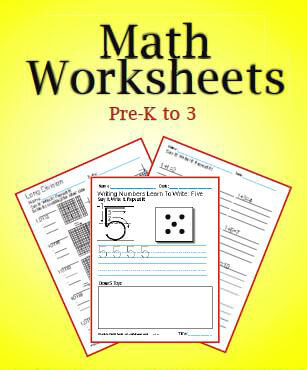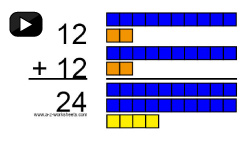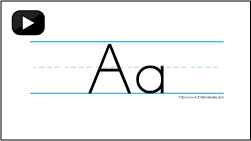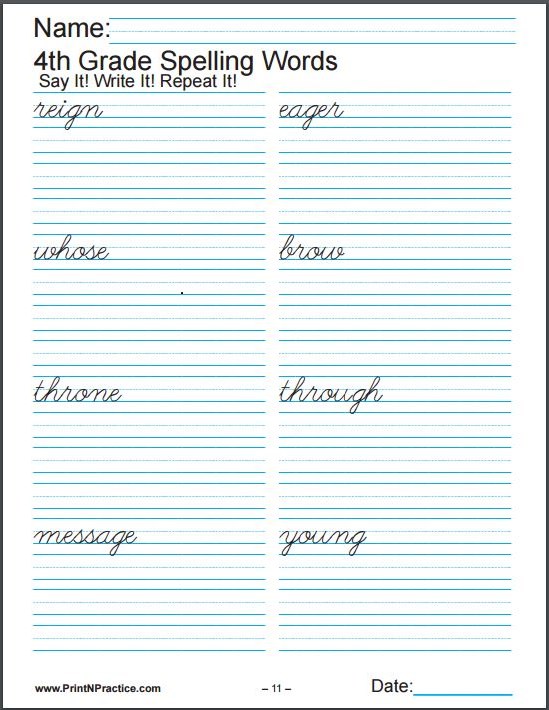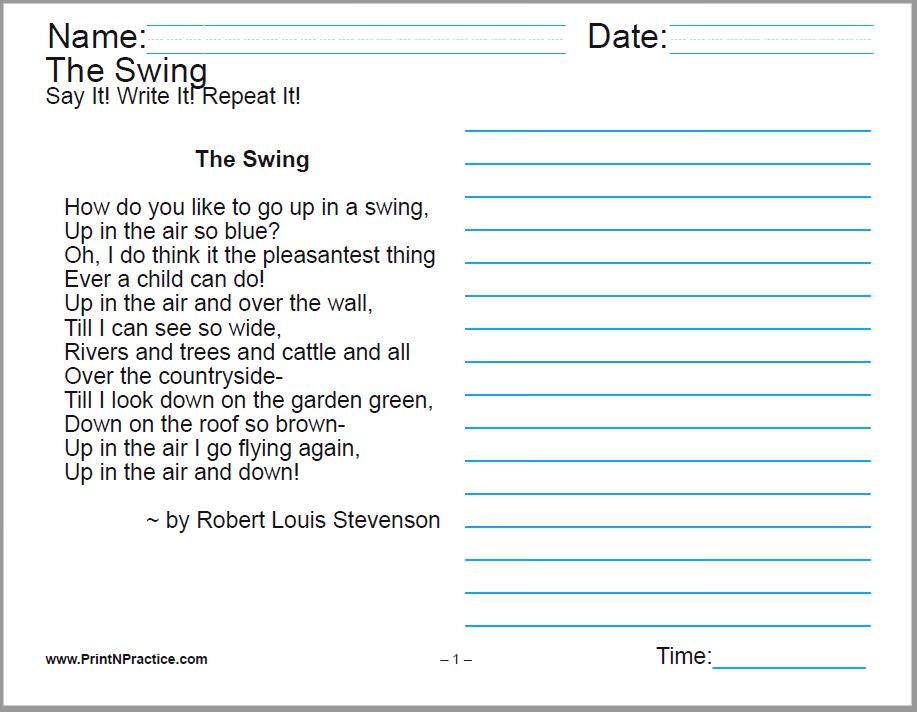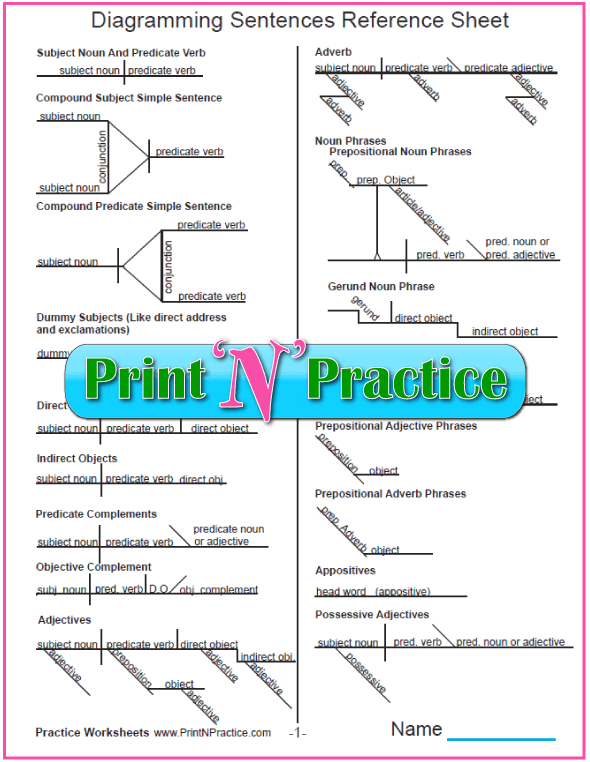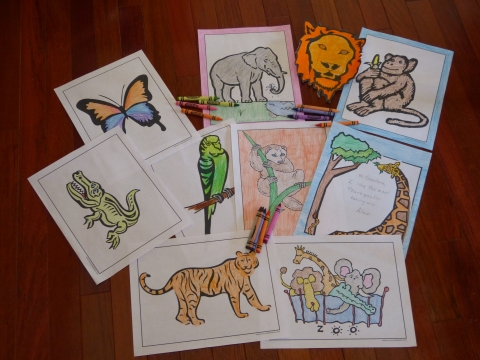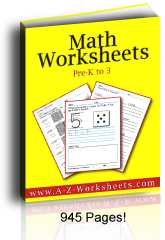Addition Videos For Kids
Kids Can Practice Addition Independently
+
You might want to Bookmark these addition videos so your kids can practice Math. I do. :-)
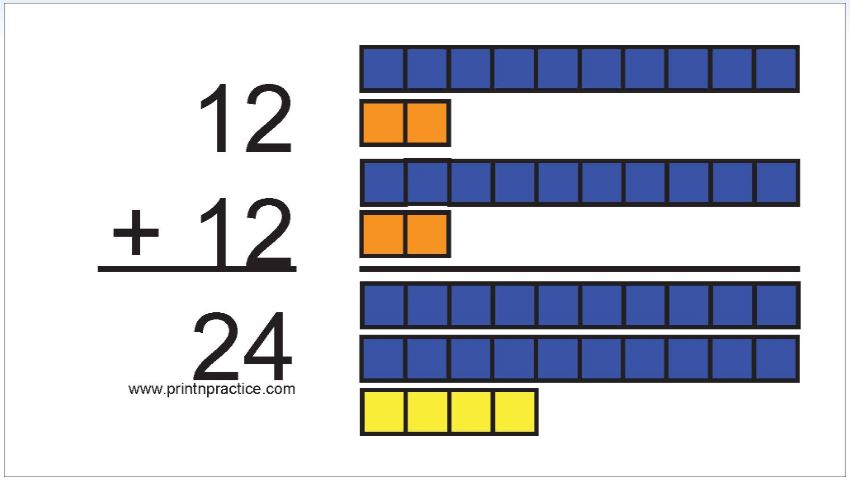 Twelve Addition Practice Videos
Twelve Addition Practice VideosTwelve Addition Videos for Easy Math Practice
You'll love these no nonsense addition practice videos.
Counting and addition are the foundation for Math. Your kids can practice the addition facts by watching these videos on your desk top, tablets, or phone.
All 12 videos are linked from this page and I have closed any off site links.
You'll also find tips for teaching addition for each of the tables in case you're looking for ideas for addition manipulatives and such.
1+ Adding One
Kindergarten Addition Video
Learning the ones is easy if children already know how to count since teaching adding one is simply counting one more. If they do not know how to count or recognize the numbers you can begin by printing our counting worksheets and number writing worksheets. Go to our main Math page to see what would work with your kids.
Use the addition videos for review.
Truly, learning the ones addition table is simply saying the next number as with counting, but frequently little children need to know the vocabulary that goes with addition: and, plus, more, etc. If your child does not recognize the + (plus sign) spend a few minutes explaining it. The same goes for the = (equal sign). The rest is the same as our English grammar.
What makes children handy with addition is being able to say the equations, and then being able to say them without having to count. 1 + 3 = 4, 1 + 7 = 8, etc.
The next thing is to teach that they can switch the numbers: 1 + 3 = 4 and 3 + 1 = 4
This is one of the properties of addition called the commutative property. I like to draw a little car on the road with a little house and work place and say that "Daddy commutes to work and Daddy commutes back from work." He drives the same number of miles each way.
The most important skill for students to have is the ability to say the names of the numbers before they begin to study addition - at least the names of the numbers to 24 which is the answer to 12 + 12. If a child cannot tell the difference between 12 and 21, practice with with our counting flash cards first and say the names as he writes the numbers.
Always, especially at this very early stage of learning addition, it is very important to also use "manipulatives" which is a big word for things. The handiest thing I keep for this is an egg box with twelve plastic Easter eggs in it. My favorite item is an abacus - I'd wanted one ever since I was a little girl. Anything will work though, even fingers.
Remember that with some children you can teach the subtraction facts at the same time because addition is the reciprocal operation of subtraction:
If 1 + 3 = 4, then 4 - 1 = 3
Actually it's another case of rearranging the same numbers in a Math fact "family" so you could teach this all together:
1 + 3 = 4 4 - 1 = 3
3 + 1 = 4 4 - 3 = 1
Point out that this helps them learn the threes addition table, too. We have children who understood both addition and subtraction from this very exercise.
An awesome idea is to teach a song to go with the counting idea. Children love "One Little Two Little Three Little Indians". The Twelve Days of Christmas is fun, too. One is "A Partridge In A Pear Tree".
We have wonderful printable addition worksheets here. Lifesavers! There are more addition videos below.
Learning the ones is easy if children already know how to count since teaching adding one is simply counting one more. If they do not know how to count or recognize the numbers you can begin by printing our counting worksheets and number writing worksheets. Go to our main Math page to see what would work with your kids.
Truly, learning the ones addition table is simply saying the next number as with counting, but frequently little children need to know the vocabulary that goes with addition: and, plus, more, etc. If your child does not recognize the + (plus sign) spend a few minutes explaining it. The same goes for the = (equal sign). The rest is the same as our English grammar.
What makes children handy with addition is being able to say the equations, and then being able to say them without having to count. 1 + 3 = 4, 1 + 7 = 8, etc.
The next thing is to teach that they can switch the numbers: 1 + 3 = 4 and 3 + 1 = 4
This is one of the properties of addition called the commutative property. I like to draw a little car on the road with a little house and work place and say that "Daddy commutes to work and Daddy commutes back from work." He drives the same number of miles each way.
The most important skill for students to have is the ability to say the names of the numbers before they begin to study addition - at least the names of the numbers to 24 which is the answer to 12 + 12. If a child cannot tell the difference between 12 and 21, practice with with our counting flash cards first and say the names as he writes the numbers.
Always, especially at this very early stage of learning addition, it is very important to also use "manipulatives" which is a big word for things. The handiest thing I keep for this is an egg box with twelve plastic Easter eggs in it. My favorite item is an abacus - I'd wanted one ever since I was a little girl. Anything will work though, even fingers.
Remember that with some children you can teach the subtraction facts at the same time because addition is the reciprocal operation of subtraction:
If 1 + 3 = 4, then 4 - 1 = 3
Actually it's another case of rearranging the same numbers in a Math fact "family" so you could teach this all together:
1 + 3 = 4 4 - 1 = 3
3 + 1 = 4 4 - 3 = 1
Point out that this helps them learn the threes addition table, too. We have children who understood both addition and subtraction from this very exercise.
An awesome idea is to teach a song to go with the counting idea. Children love "One Little Two Little Three Little Indians". The Twelve Days of Christmas is fun, too. One is "A Partridge In A Pear Tree".
We have wonderful printable addition worksheets here. See more addition videos below.
2+ Adding Two First Grade Addition Video
The easiest way that I've seen to teach the twos is to use pennies. Any small item that is easy to store is good, too, so that you can use two fingers to pair off two more and quickly add two as with skip counting (although skip counting is more like multiplication). Just be sure that if there are small children around that they do not put them in their mouths. Always beware of a choking hazard with Math manipulatives.
Watch their faces and adjust your vocabulary as you teach the concepts of the words plus and more. Sometimes it is best to just say "and two more". Then proceed through the week to teach whatever else your Math book uses while continuing to practice the tables.
The important part here is learning the idea of learning two more. I love the idea of teaching addition and subtraction together. If I can learn that 2 + 2 = 4 I can also learn that 4 - 2 = 2. See above as with teaching the ones.
3+ Adding Three Addition Flash Cards Video
There's not much more to learning the threes than there was to learning the twos. Pennies still work as great manipulatives because it is easy to slide them with one move to show the addition of three.
By the time children get to the threes table they're starting to catch on to the idea of adding a group of numbers. Be encouraged! The higher tables are not as hard to teach as the lower tables. Why? They know the vocabulary better, they can write the numbers better, and they understand the concept of addition better.
Also, the commutative property of addition prepares them for this. So many children see this at a glance. They've already learned two of the threes: 1 + 3 and 2 + 3.
I think that it is a good idea to teach subtraction at the same time so, if you like the idea or your kids are able to assimilate it, teach the two together. If they can learn that three and three are six, they can also learn that six minus three are three. If you take a few moments with this they might zoom through the subtraction tables when it is time to memorize them.
I have found that using printable Math worksheets and our addition videos together for addition practice is very helpful for memorizing the addition tables. The video Math flash cards don't spill, and the worksheets are ready to print at anytime - over and over for easy practice. Assign your kids to practice the Math facts three times each and use the printable addition worksheets.
4+ Adding Four Addition Flash Cards Video
Adding four is adding a significantly larger number than two or three so some children stall and think that they cannot do it. Don't even let that thought start, move straight ahead with practice so that they don't feel the fear of using a "big" number.
What's so funny is that they do really well adding five! Convince them that this must be easier because they are adding a smaller number. Why is five so easy? They have five fingers is all I can figure. :-)
Again, I really think that it is good to have manipulatives for little ones. I love the sets that companies like Math-U-See sells where the four "units" are all on one bar. The rod type manipulatives make it easy to show four added to anything with the four all as one unit. An abacus is still a great help, although it is harder to show "and four more" especially for little hands.
An easy "real life" word problem to show is having a family of four come to visit. You can do this with stories, too. These addition videos go up through twelve.
+5 Addition Video
By the time the children have conquered the Math addition facts for the fours, they find the fives easy. I don't know why. Maybe it's because they have five fingers and think that five is easier to add.
I do know this. As our older children grew up we had two kinds: those that absorbed the tables easily and those that couldn't absorb them no matter how hard we worked with flash cards, copied the equations, or drilled with timed tests.
I had one that I had to simply let use the multiplication table through high school - but guess what? He is as good with multiplication as anyone now that he is grown. Okay, so multiplication is not addition, but my lesson learned was that by simply using the table he eventually "got it".
After you've made sure that your kids can follow the equations, pronounce the Math terms, and write the right numbers (not transposing 15 for 51); using these addition videos for review makes it easy for kids to practice.
6+ Adding Six Addition Flash Cards Video
Six is also a half dozen, so if you have plastic Easter eggs, you can show adding a half dozen.
The Math manipulative sets have six unit bars, too, which make adding six so much more visual and tactile. It's getting to be a large enough number that many items won't all fit in one hand, which is why I like the bars.
After the sixes, you'll see that the children who understand that they can switch the numbers to arrive at the same answer will start to realize that they already know "up to the fives" in the sixes. There are fewer equations to learn or understand by this time - at least for some children. Remember to let your children review these addition videos if you do not have time to help.
7+ Adding Seven Addition Flash Cards Video
I remember our fourth daughter realizing one year when we were drilling at the beginning of the school year that she only had six new equations to "learn" at this point. She was so excited! What a happy day! She zoomed through it in just a day or so.
8+ Adding Eight Addition Video
When she zoomed through the sevens, she was so encouraged that she put all her energy into learning the eights. I'm sure, if memory serves, that she quizzed out on the eights in one day.
9+ Adding Nine Addition Flash Cards Video
When she saw how fast she got through the eights she really wanted to try the nines. A few times practicing with the flash cards on the answer side, she passed right away.
+10 Addition Flash Cards Video
Well, of course, the tens were super easy and she barely had to practice before she quizzed out of the tens and begged to go on to the elevens.
In some schools adding 10 doesn't happen till First Grade. You can use our addition worksheets for First Grade with our first grade addition videos on this page.
+11 Addition Video
The elevens took more time, but I think that she was able to get the tens, elevens, and twelves all in the same day.
+12 Addition Flash Cards Video
Ta-da! The twelves left only one equation left to learn. We practiced it a few times and, Poof! she was able to answer all the flash cards!
This was a very encouraging time for all of us, especially as her younger brothers and sisters were excited right with us. We took a day off and then moved to the subtraction tables.
We also have printable addition worksheets for kids to go with our addition videos.
Addition Word Problems
On another note: If your kids are having trouble with addition word problems, it is possible that they need practice reading. Write the Math words that your books are using and even write the very sentences and teach these like spelling words and reading class.
It may help your kids to copy the sentences from their text books as writing includes reading and adds more sense perceptions to the effort. 'Just an idea.
Our Phonics pages offer the beginnings of reading help.
You might also like these:
- Our main printable Math worksheets page.
- Printable counting worksheets.
- Printable number coloring pages.
- Printable addition worksheets and flash cards.
- Printable subtraction worksheets and videos.
- The Twelve Days Of Christmas and Counting Pages.
Thank you for visiting our addition videos.
Buy Our Math Worksheets Bundle And Save Time!
- 945 PDF Math worksheets.
- Buy K-6 in one digital download.
- No ads.
- Filed by topic.
- Interactive. Printable.
- Use with any Math Lesson Plans.
- Addition, Subtraction, Multiplication, Division and Fraction Practice.
Be encouraged to stay in touch! Join my free newsletter....

